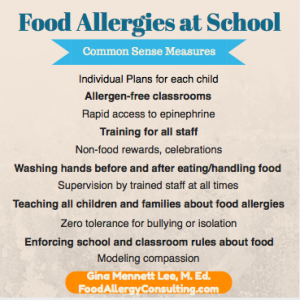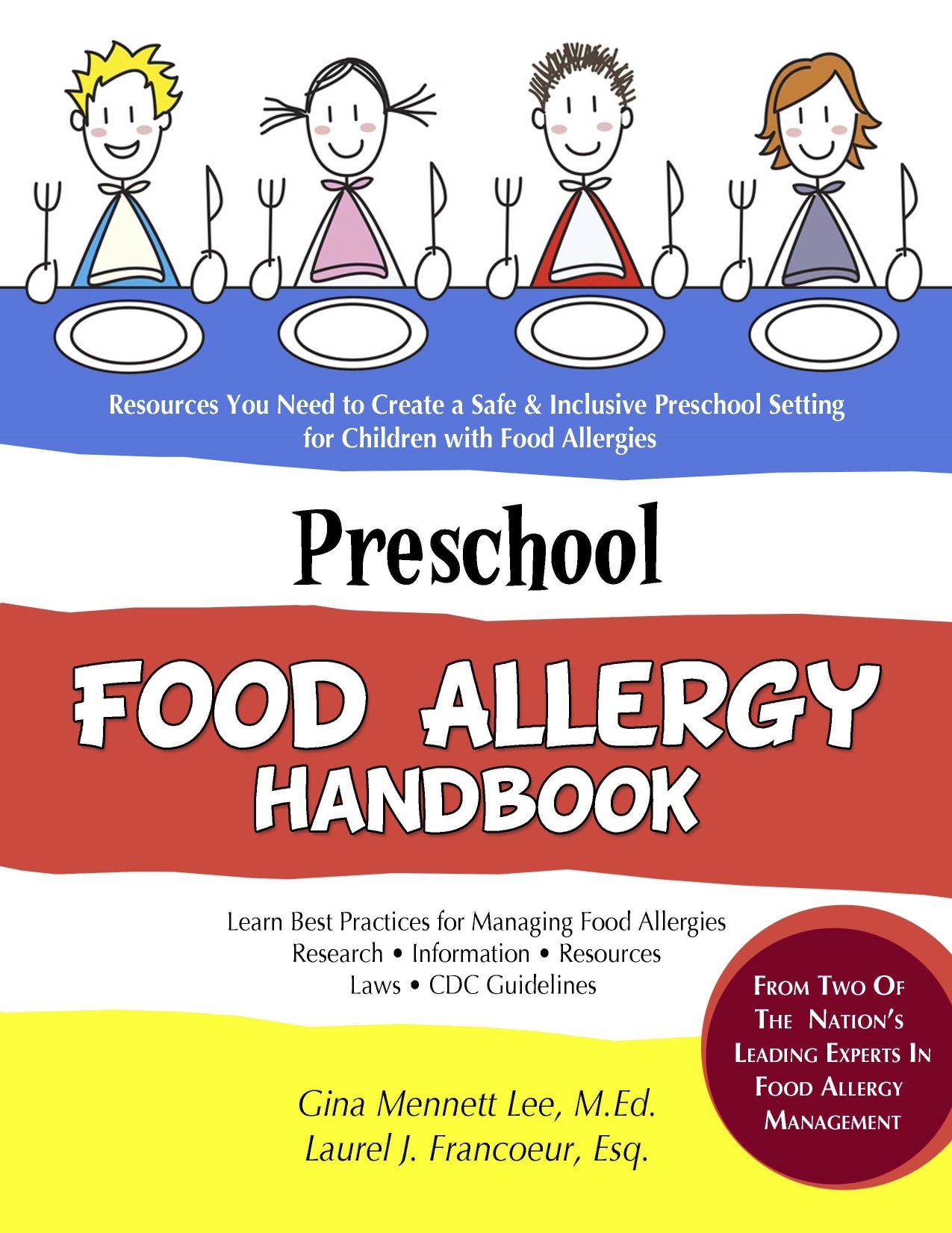A couple of weeks ago, I posted a blog about how to respond to a school when they state that an accommodation can’t be made because they cannot guarantee it 100%. Since that time, I have had many questions about what common sense measures SHOULD be implemented to reduce risk. I have devoted many blogs to this topic but it is worth discussing again.
The CDC guidelines are a good start when discussing policy and even individual accommodations. If all schools implemented the risk reduction practices below, we could drastically improve the current landmines that children and families managing food allergies currently must navigate. I like this checklist from FARE as it concisely summarizes what teachers should be doing in their classrooms according to the CDC, but for more information I highly recommend reviewing the CDC guidelines yourself. (Pages 40-44 are especially helpful)
Best Practices:
- use of non-food rewards and celebrations (for a list of non-food ideas see this one I created for KFA)
- allergen-free classrooms (snacks, classroom supplies, etc..)
- washing hands before and after eating or handling food
- teaching all children and families about food allergies
- enforcing school and classroom rules about food
- rapid access to epinephrine
- supervision by trained staff
- reduce or eliminate unnecessary food from classroom and events
It is important to remember that each child is an individual with a unique medical history and different needs This is why, in addition to developing a district-wide Food Allergy Management & Prevention Plan (FAMPP), it is critical that an individual plan of accommodation (504, HCP) be created for each child with a food allergy.
Here are my top 3 non-negotiables for individual plans, but every plan may (and should) vary. I hope this helps. Please feel free to add your own “common sense measures” by leaving a comment. Also, which of these best practices has (or would have) the greatest impact on your child?


